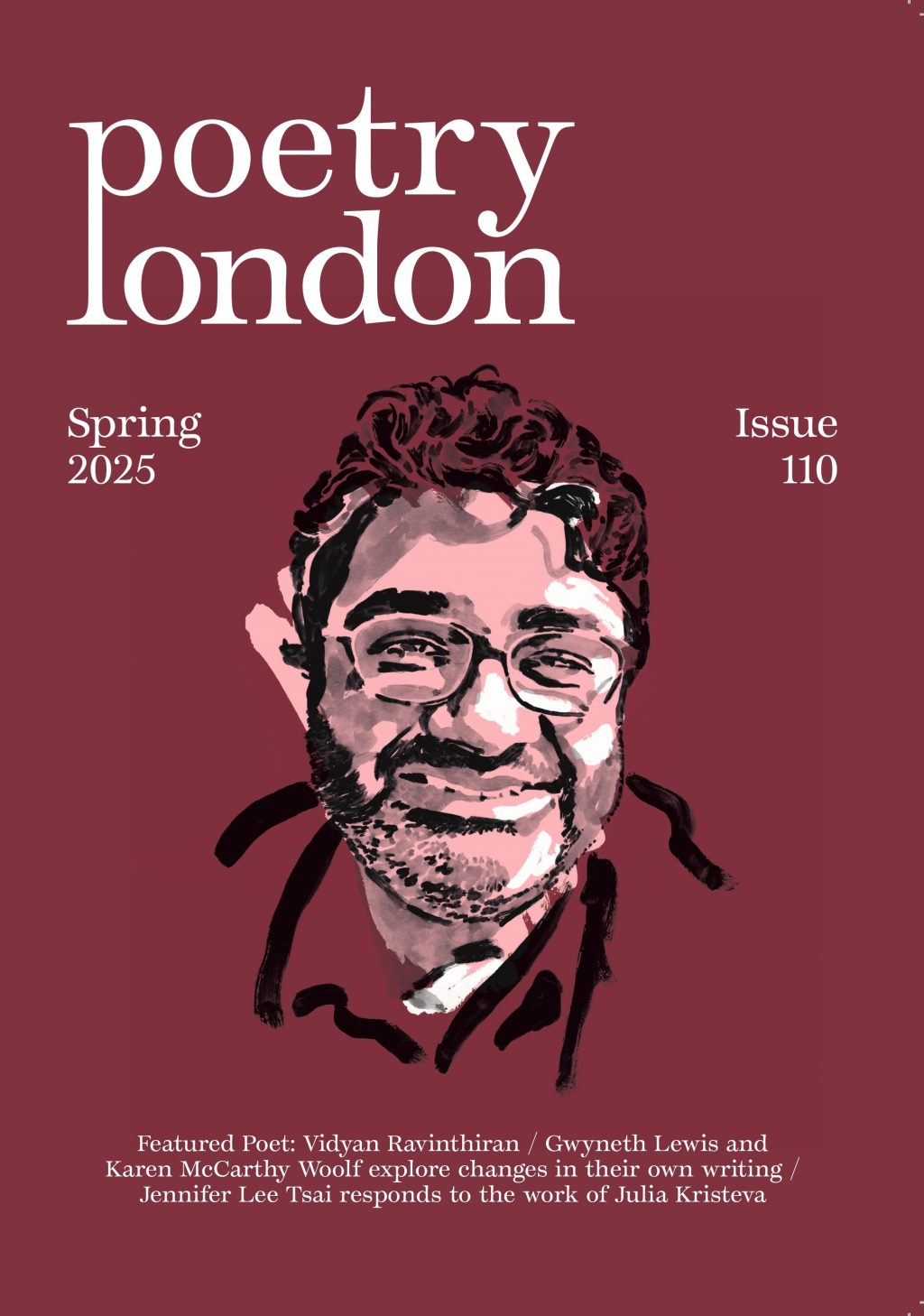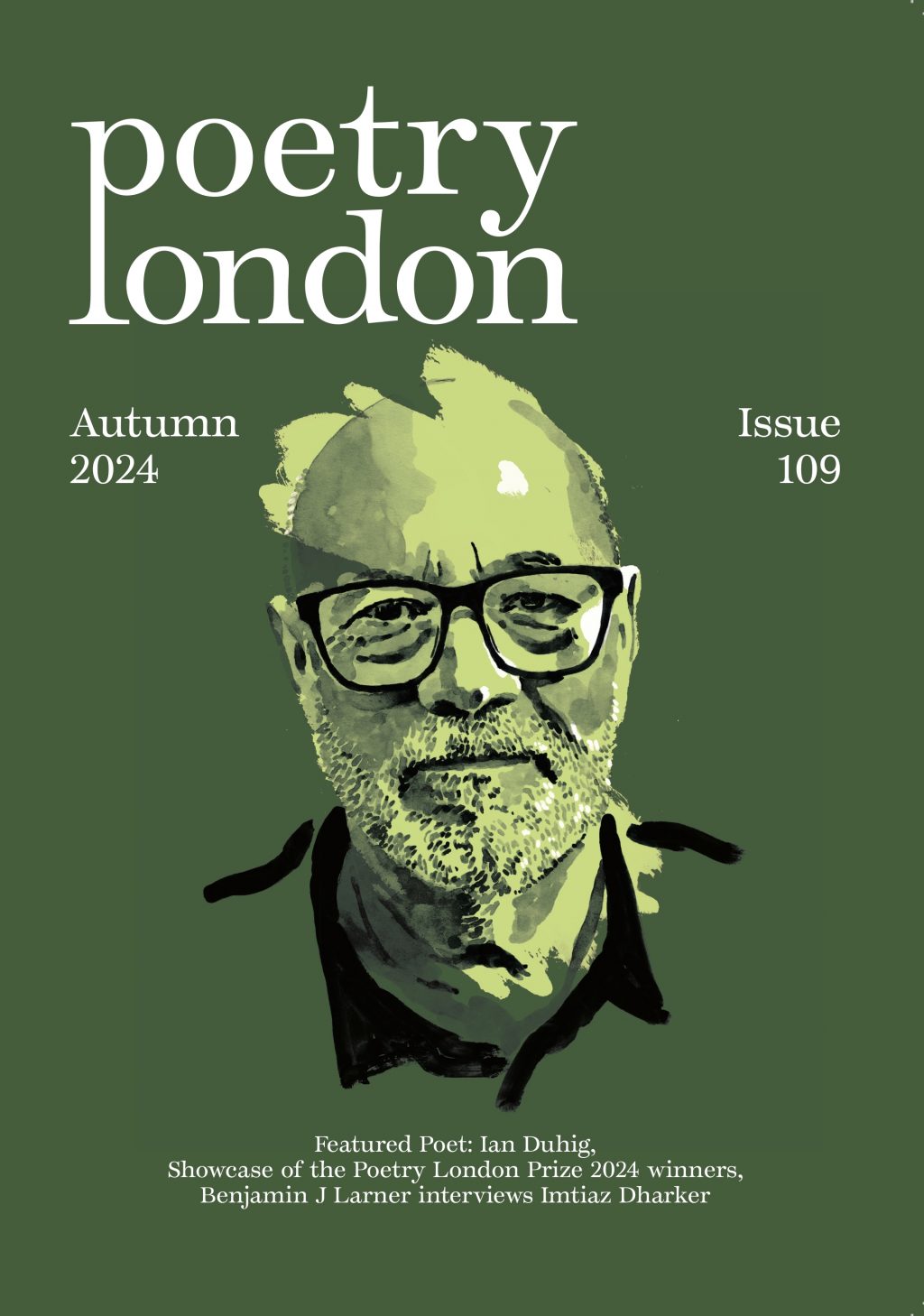Reshaping the Fable
Somhairle Macgill-Eain (Sorley Maclean)
Caoir Gheal Leumraich / White Leaping Flame: Collected Poems
(Edited by Christopher Whyte and Emma Dymock)
Polygon £25.00
Gaelic for Scots who do not speak it is an unsettling presence, familiar yet inaccessible, instantly recognized if not easily read on the page; close to the ear while remaining confusing in the mouth. It is other to us in the way a doppelgänger is, and, as such, may explain the presence of so many doubles in our literature. Though of course Southern English looms over both Gaelic speaker and non-speaker, which is perhaps a fuller explanation of that phenomenon; its presence in our speech, like England’s in our political and cultural life, makes us other to ourselves in a way Sorley MacLean recognized with painful clarity.
Those of us lucky enough to develop as readers or writers in a Scotland in which MacLean was a living presence were perhaps not fully aware of the dimension of brilliant invention in his creative life. His powerful readings, in which a note of what seemed self-evidently bardic intensity was both hit and held, fitted perfectly with the story laid out in the selected – and selectively edited – collections of his poetry with which we were familiar. That he was the successor of the great Gaelic poets Duncan Ban Macintyre, Alasdair Mac Mhaighstir Alasdair, Màiri Mhor nan Orain or William Ross, we understood, though we might not have known enough about their work. We were also aware that he was the follower of Hugh MacDiarmid in both his nationalism and his communism, combining a love of Scotland’s landscape, languages and culture with an awareness of the tragedies of twentieth-century Europe.
And we knew that his best work was a synthesis of these elements, bringing an intense strain of the love lyric into Modernist juxtaposition with a keening political edge, as in ‘Dàin do Eimhir IV’:
Girl of the yellow, heavy-yellow, gold-yellow hair,
The song of your mouth and Europe’s shivering cry,
Fair, heavy-haired, spirited, beautiful girl,
The disgrace of our day would not be bitter in your kiss.
But what we were less aware of, and what this new edition of his collected poems brings into striking focus, is the element of sheer imaginative daring in this endeavour: the extent to which he made a marriage of unlikely elements seem inevitable, and the extent to which he had to manipulate both the facts of his life, and the presentation of his work, to bring this about.
The two main sequences on which his reputation rests, ‘Dàin do Eimhir’ (‘Poems to Eimhir’) and ‘An Cuilithionn’ (‘The Cuillin’) were largely written in an intense period of composition between the late 1930s and early 1940s. ‘Dàin do Eimhir’ has a dramatic Yeatsian combination of hopeless love and cataclysmic events; ‘The Cuillin’ resembles MacDiarmid’s fiercely political long poems, subjecting the timeless landscape of Skye’s mountains to the full blast of MacLean’s historical imagination. But what Whyte and Dymock disentangle here is a further struggle – between the elder MacLean and his younger self. As Christopher Whyte says of later editions:
To all intents and purposes, the love sequence [in ‘Dàin do Eimhir’] vanished. Of forty-nine elements published in 1945…only twenty-seven figure in his 1977 selected volume…apparently disconnected poems each with a title of its own. When ‘An Cuilithionn’ reached publication…between 1987 and 1989, MacLean cut the original by a quarter, producing an abridgement whose tonality and balance were strikingly different.
There is an incident, which seems to go to the heart of this, in which the draft translation of a key poem is altered. It is an account of seeing the central woman addressed in the sequence perform in what we now know was a concert of Beethoven’s Eighth Symphony. The Gaelic word ‘còisir’ allowed a certain ambiguity between ‘choir’ and ‘orchestra’, so translating it as ‘choir’ would obscure this specific detail but, apparently, MacLean’s fear that she be identified was so great that ‘a word’ – presumably ‘orchestra’ – ‘has been deleted so energetically as to leave a hole in the paper’. One is reminded of Beethoven’s own scratching out of the dedication to Napoleon of his Third Symphony, the Eroica: an inspiration so powerful as to produce a great work – and ‘Dàin do Eimhir XXIII’ is certainly that, pulling together Celtic and classical myth, fusing Gaelic lament and Beethoven-like anguish in ‘the mild paean of your face’ – but also causing as great a reaction in its composer as to render that inspiration sous rature.
What MacLean appears to be doing here is shaping through both translation and editing what Whyte calls ‘a heightened and more shapely “fabula”’. In other words it is a compositional act that comes into conflict with the equal and opposite intent of an editor that the text be complete, and its background clarified. What Whyte declares he and Dymock are doing is restoring ‘its strangeness to MacLean’s poetry’. What they perhaps succeed in doing is revealing the strangeness of MacLean’s biography. To illustrate this, I would like to compare two stanzas, one included in ‘Dàin do Eimhir’, one omitted from an uncollected poem written directly after it. Here is the first:
Cha tuig thusa mo grádh bhuam
no m’ àrdan arraghloir,
a nighean bhuidhe àlainn,
ge tu m’ àilleachd fhalbhach.
I’m presenting this initially only in Gaelic in order to point to a significant tragic element at the heart of the sequence. Most readers will be unable to understand it without its translation – and in not understanding it, they will, crucially, be in the same position as ‘Eimhir’. The subject of address, in other words, was not a Gaelic speaker, and did not understand that address. As these lines state:
You will not understand my love for you,
nor my vain, lofty prattling,
beautiful yellow girl,
though you are my transient beauty.
The parallels between the poet’s situation here and the situations of, firstly, Gaelic itself in relation to English, and secondly, the high Modernist context in which this poem exists in relation to its audience, could not be more starkly drawn. MacLean has found a perfect symbol, an ironic, tragic, comic node point into which he can gather both his tradition and his expression. Not being understood while desperately desiring to be, is, in this sense, the whole point.
The other, rejected, stanza represents an emotional nadir, reflecting on the discovery that, although he thought he was caught up in a tragic love affair, one which could never be consummated because of a mysterious act of mutilation – as he says in XLVI, ‘I have as my share of you / a beautiful head and a torn body’ – the actual situation was one of deceit and infidelity:
You, Sorley, are the laughing-stock,
more than any man or animal,
given that your balls
tripped up your intelligence.
The humiliation not only that he was being lied to, but that he put those untruths into his poetry, is certainly one motive for retrospectively editing his work. But equally so is the sense that the shapeliness of the fabula is more important than the humiliation. There is something overly declamatory about aspects of ‘Dàin do Eimhir’ that cutting redirects and universalizes. And the same could be argued though to a lesser extent with ‘The Cuillin’.
The poem as a whole displays all the virtues of MacLean’s voice. There are the magisterial acts of naming significant figures, be they heroes or villains, historic or his contemporaries, and applying to them rhapsodic praise or excoriating blame. Added to this is the elemental power of topography – mountain, wood, sea:
One evening and I on Sgurr na Banachdaich
ghosts rose in the late hours:
on every pinnacle of the Cuillin
the image of a soiler was rocking.
A-straddle on Sgurr a’ Ghreadaidh
there were three of the lords of Dunvegan…
Tradition is venerated in the sense that landscape, lives, music or poems are always already beautiful, magnificent or significant, treating the poetic act as one of confirming these qualities, rather than assigning them. This is strongly elegiac in effect, as where, in ‘a Skyeman by the side of the great Mary’, he alludes to Mary MacPherson (Màiri Mhor):
But I will not tell her strong spirit
that no turning has come on that ebb-tide;
I will avoid her brave forehead
as my tale is of the ethos of our island ebbed.
Part VI, originally represented with only a few verses, is here revealed to be an extended dithyrambic lament in the voice of a muse figure, ‘the great Clio of Skye’, in which the muse of history ranges from island to island before striking out across Europe, concluding: ‘I am the Clio of the world: / my wandering is eternal, and chill with death’. There is in this something at once magnificent and over-reaching, a little like the longer poems of MacDiarmid by which it is inspired. In a key sense the act of naming adds little to the extraordinary but unstated personification of Gaelic culture depicted as early as ‘A Highland Woman’, with its symbolic starkness of adjective:
her time has gone like a black sludge
seeping through the thatch of a poor dwelling:
the hard Black Labour was her inheritance;
grey is her sleep tonight.
It is, similarly, in the portraits of less nakedly symbolic figures that the resonance of his Second World War poems comes out, most strikingly in ‘Heroes’, where a sonorous naming of antecedents is followed by a grimly comic ‘Englishman’: ‘a poor little chap with chubby cheeks / and knees grinding each other’. Here it is the play against expectation, the collision of registers that sets knock knees against ‘the morose wounding showers’, which means that a brief, seemingly pointless act of heroism takes on Homeric resonance:
until he himself got, about the stomach,
that biff that put him to the ground,
mouth down in sand and gravel,
without a chirp from his ugly high-pitched voice.
There is in this, and the depiction of (and it remains a disturbing phrase) ‘the innocent corpses of the Nazis’, the definite sense of a maturity of art which has arisen equally from experience and experience of poetry. One or two of these poems are the equal of and oddly parallel to Keith Douglas’s poems set in the same arena.
There are several late flourishes of this in the succeeding decades alongside rather too many occasional poems and the last long poem, a sketchy retelling of the old Gaelic song ‘Uamha ‘n Oir’ (The Cave of Gold), in which the strange self-sacrifice of a piper entering a magical cave is reapplied to the fate of a poet choosing to write in Gaelic. The most significant of these remains ‘Hallaig’, an extraordinary feat of imaginative resurrection of a culture destroyed by repression, greed and indifference, in which a razed and replanted wood (‘my mind is a dim wood’, as an earlier poem observes), offers refuge to time itself in the form of a deer with this astonishing image:
when the sun goes down behind Dun Cana
a vehement bullet will come from the gun of Love;
and will strike the deer that goes dizzily,
sniffing at the grass-grown ruined homes…
Here the poet as hunter fuses specificity, tradition, ruthlessness and loss in the same impossible gesture Keats attempts in the ‘Ode to a Grecian Urn’. There is something of the emphatic gesture of creative mastery in this which returns us to the issue at the heart of this book.
We cannot, now, not know the circumstances behind MacLean’s editorial rethinking of his own work, and we must be grateful to his editors for their clear exposition of that act of ‘psychomachia’, as Whyte wisely calls it. But gaining this knowledge only helps us to see more clearly the commanding artistry that led MacLean to redraft not just a poem, but his entire œuvre.

